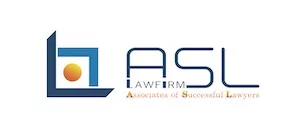The accountant must determine the taxable income before they may evaluate the payable enterprise income tax.
According to Article 2 of Circular No. 96/2015/TT-BTC, revenue from the production, sale, and provision of goods and services, as well as other revenues, is included in taxable income for a tax period.
The following formula is used to evaluate taxable income for a tax period:
Taxable income = (Turnover - Deductible expenses) + Other incomes
Therefore, the business must specify the data as follows in order to calculate the taxable income: (1) Turnover; (2) Tax-deductible costs; and (3) Other Incomes, specifically:
Turnover
According to Article 5 of Circular No. 78/2014/TT-BTC, the following formula shall be used to calculate turnover for taxable income:
The total earnings from the sale of goods, remuneration for processing, and fees for services provided with any price subsidies, surcharges, and other fees that a company may receive-are all included in determining taxable income.
Turnover used to calculate enterprise income tax includes value-added tax for businesses that declare and pay value-added tax using the method of taxation based directly on added value.
The turnover for businesses that calculate value-added tax directly based on added value is inclusive of value-added tax.
Businesses that provide services for which consumers pay in advance over a long period of time must distribute their revenue when determining their taxable income between the number of years of advance payments or according to a lump sum payment.
If these businesses receive tax incentives, the tax incentives will be calculated based on the total amount of enterprise income tax that must be paid during the years of advance payment divided (:) by the number of years of advance payment.
The turnover from these operations minus deductible costs for these activities equals the income from the production, trading, and provision of products and services.
The income from each activity must be calculated individually and multiplied by the appropriate tax rate by an enterprise that engages in different production and trade activities subject to various tax rates.
Income from the sale of real estate or investment projects, income from the transfer of investment project participation rights, or income from the transfer of the legal right to explore, exploit, and process minerals must be separately accounted for in order to calculate and pay the 20% enterprise income tax.
Except for income from businesses implementing investment projects on the construction of social housing for sale, rent, or lease-purchase, which retains a 10% enterprise income tax rate, these incomes are not eligible for tax incentives for businesses.
A business that transfers the real estate, investment projects, or the right to participate in investment projects during a tax period may use the below losses to offset the profit from its operations (including also other incomes prescribed in Article 7 of this Circular): losses resulting from the sale of real estate, the transfer of investment projects, or the transfer of the right to participate in investment projects, as well as losses from prior years that are still eligible for loss carryover.
If a business that is going through the dissolution process transfers real estate that is a fixed asset after getting the dissolution decision, the income (profit), if any, from that transfer may be used to offset the loss from that company's production and business activities (including losses carried forward from prior years under regulations) in the tax period in which that real estate transfer was made.
Deductible expenses
According to Article 1 of Circular No. 96/2015/TT-BTC, businesses are deducted from the expenses if they meet all the conditions as listed below:
- Condition 1: Actual expenses arising in relation to production and business activities of enterprises.
- Condition 2: Expenses with adequate lawful invoices and documents as required by law;
- Condition 3: Expenses for purchase of goods or services valued at VND 20 million or more (VAT-inclusive prices) per invoice with non-cash payment documents.
Therefore, businesses can be deducted all the expenses as long as they relate to production and business activities and are supported by sufficient, legitimate invoices and other documents as required by the law;
Other incomes
According to Article 7 of Circular No. 78/2014/TT-BTC (which is supplemented and amended by Circular No. 96/2015/TT-BTC and Circular No. 151/2014/TT-BTC), the other incomes include:
Income from the transfer of capital or securities as guided in
Chapter
IV of the Circular 78/2014
Income from the transfer of real estate as guided in Chapter V of this Circular, in particulars:
- Incomes from real estate transfer include income from the transfer of land use rights, or land lease rights (including also the transfer of projects associated with the transfer of land use rights or land lease right in accordance with the law).
- Income from the sublease of the land of real estate enterprises in accordance with the land law regardless of whether there is an infrastructure facility or architectural work attached to the land;
- Income from the transfer of houses or construction works attached to the land, including their appurtenances, in case the value of such appurtenances is inseparable upon the transfer, regardless of whether land use rights or land lease right are/is transferred; and income from the transfer of house ownership or use right.
Originally published September 16, 2022
The content of this article is intended to provide a general guide to the subject matter. Specialist advice should be sought about your specific circumstances.


